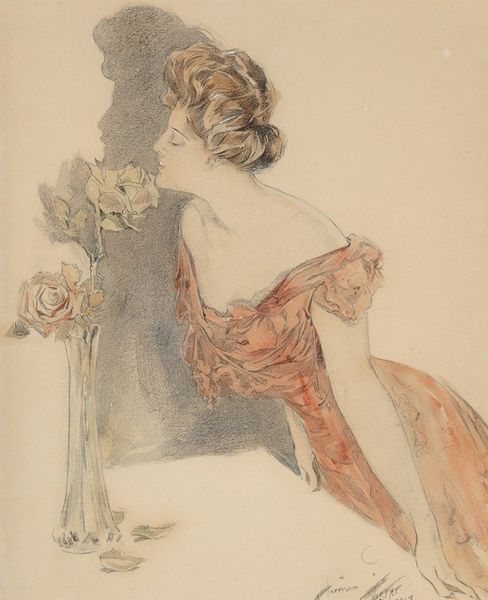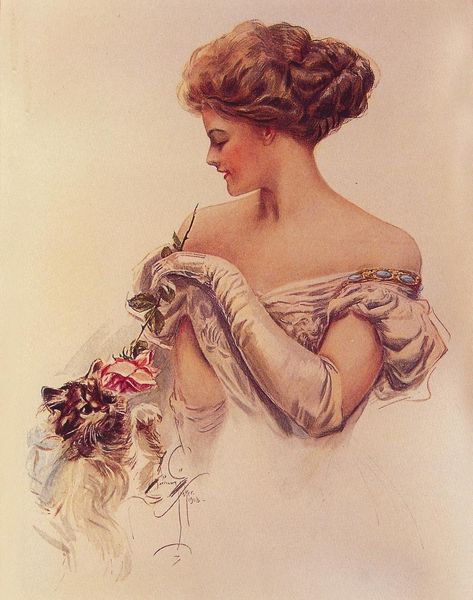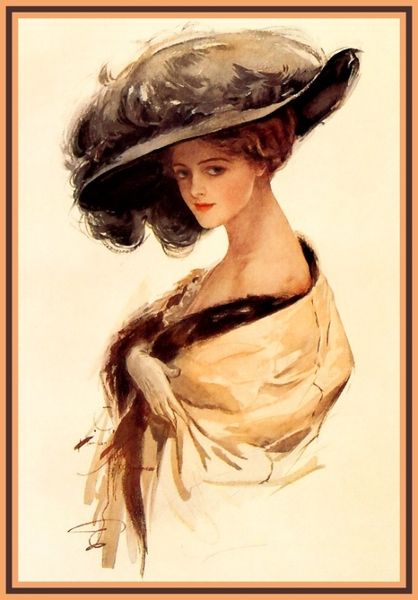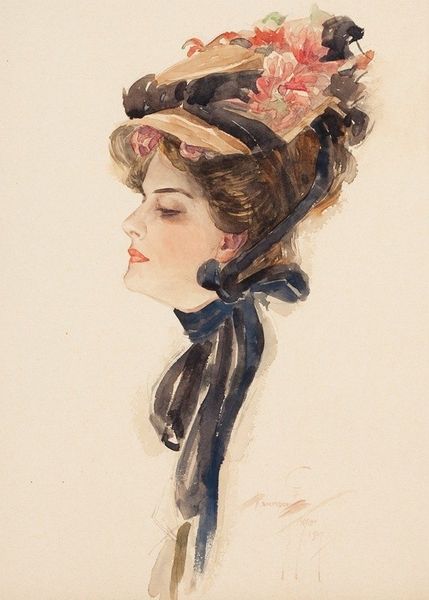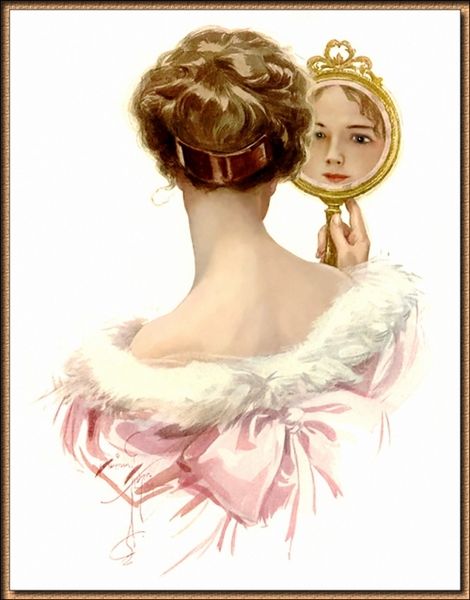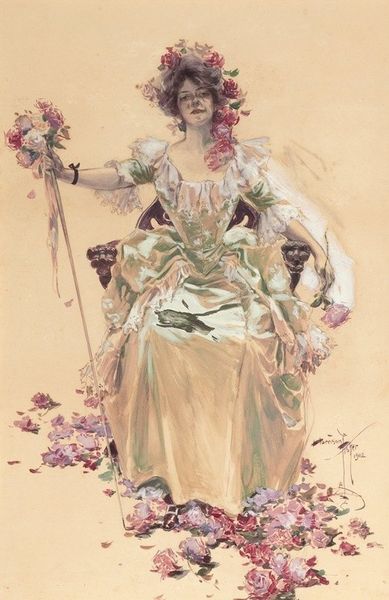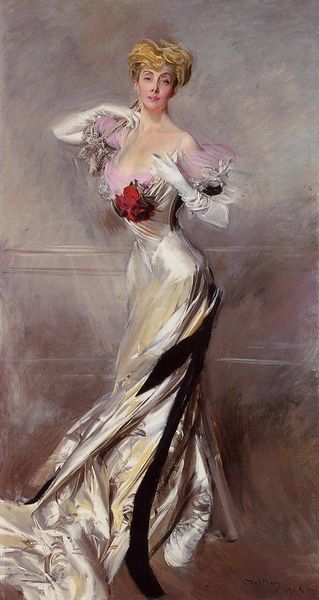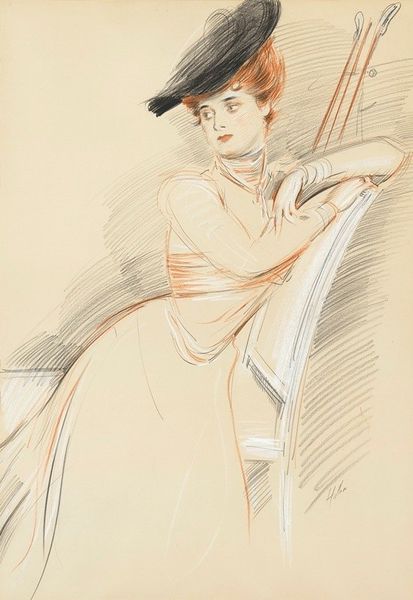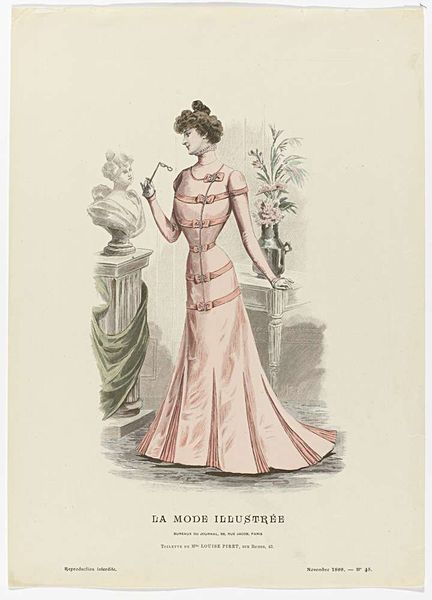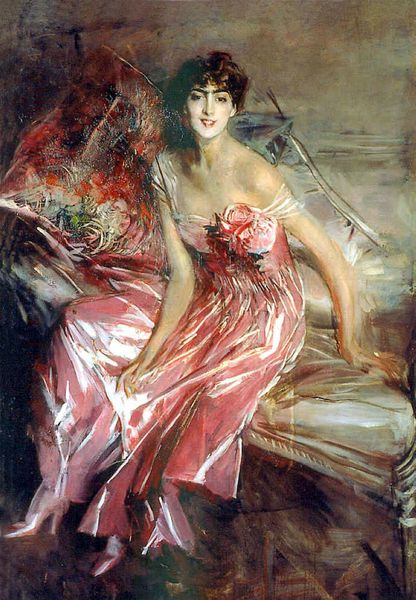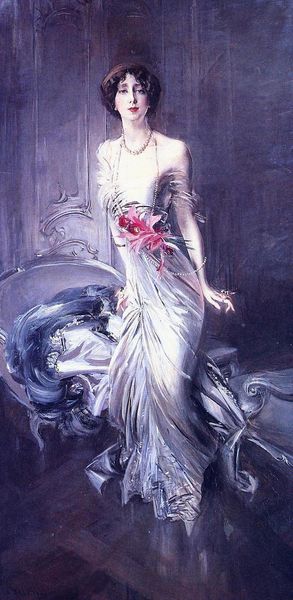
Copyright: Public Domain: Artvee
Curator: What a serene composition! This is Harrison Fisher’s “American Beauties,” created around 1909. The delicate washes of watercolor give it a light, ethereal feel. Editor: Ethereal indeed. There's a quietness to the piece; almost a melancholic stillness in the woman's posture. The shadow adds depth but also suggests a certain isolation, doesn't it? Curator: It's interesting you pick up on that. Fisher's work, while appearing decorative, was deeply engaged with ideals of femininity at the turn of the century. The “American Beauty” wasn’t just a pretty face; she was an embodiment of purity, grace, and domestic virtue—traits highly valued in a rapidly changing society. We could see it as a response, maybe even a gentle resistance, to emerging New Woman narratives. Editor: So the vase of roses, her soft, almost languid pose—they aren’t simply aesthetic choices. They speak to the limitations placed on women, even within the seemingly idyllic romanticism. Consider that shadow again, the contrast in the delicacy of the flowers that she appears to be enjoying; are they hers, are they an expectation of the kind of feminine engagement the painting puts forth? Is it representative of internal constraints or external restrictions on movement or self-expression. Curator: Precisely. Her engagement with the flowers speaks volumes, suggesting a focus on beauty and domesticity as the center of her existence. Look, too, at the texture in the fabric of her gown versus the smooth quality of her face—Fisher expertly highlights these contrasts. We should reflect on these notions while we study her role as merely decorative. Fisher himself was tied to the publishing world that catered to prescriptive ideas of gender. Editor: That interplay between public expectation and individual experience—it's always there. This painting isn't just a visual delight; it's a cultural artifact. Curator: Indeed, seeing it through both historical context and contemporary awareness makes it more meaningful. I think it invites a relevant dialogue, particularly now as conversations around gender continue to unfold and challenge historical assumptions. Editor: Absolutely, I leave with a stronger understanding of not only the image, but the environment that birthed the expectations. It’s fascinating.
Comments
No comments
Be the first to comment and join the conversation on the ultimate creative platform.

